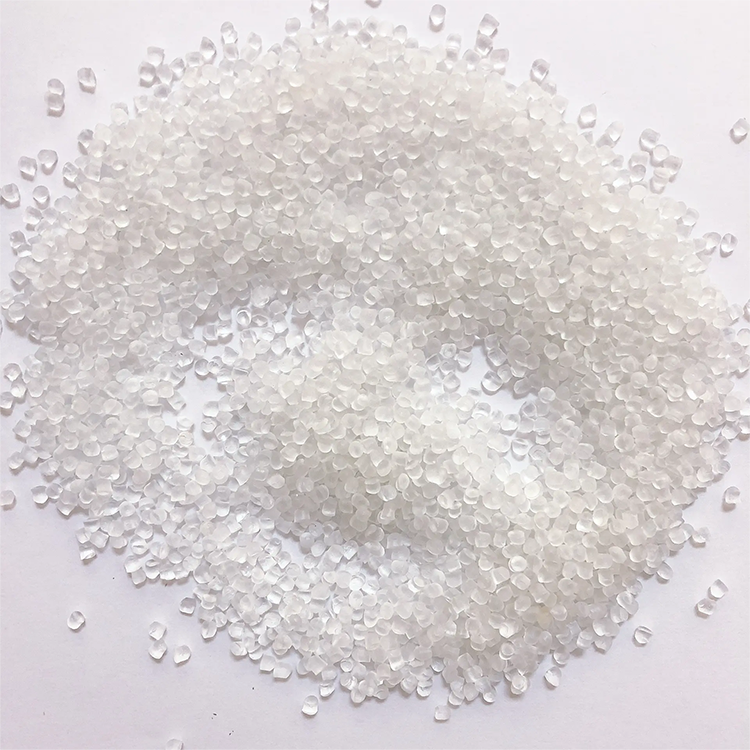
Abbreviated as PVC
Scientific name: Polyvinyl chloride
English name polyvinyl chloride
Monomer vinyl chloride
Pure polyvinyl chloride is only a white powder, which means it is only a polymer resin and cannot be used for direct processing of products; Due to different synthetic process routes, this resin powder is generally divided into two categories: one is loose resin, and the other is tight resin.
The polyvinyl chloride rubber materials we commonly use are granular and multi-component plastics. In addition to the polyvinyl chloride resin powder mentioned earlier, plasticizers must also be added to increase its fluidity, stabilizers to improve its thermal stability, lubricants to improve its demolding properties, as well as fillers, colorants, coupling agents, etc; Due to the different contents of each component, PVC particles with varying mechanical properties and hardness are formed; It is generally expressed in terms of IP degree; PVC particles are generally divided into soft PVC and hard PVC.
Due to the different components contained in PVC adhesive, its appearance varies greatly. Some are as transparent as glass, while others are opaque; Some are very soft, resistant to folding, and have rubber like elasticity; There are also hard materials such as ABS, which have excellent mechanical properties and can be used as engineering materials. Most PVC has slight toxicity, but it is not prone to poisoning upon contact; There are also food grade PVC adhesive particles available.
Burning characteristics: PVC is difficult to ignite and extinguishes immediately upon ignition; But when burning, the upper end of the flame is yellow and the lower end is green (green is the unique chromatogram of chloride ions), emitting white smoke (white smoke is the product of HCL gas combined with water); When burning, the rubber material softens and emits a pungent odor, similar to hydrochloric acid.
Advantages: acid and alkali resistance, not resistant to organic solvents, excellent electrical insulation; It has fire-resistant and self extinguishing properties, which are quite important for home appliance materials and are also wear-resistant, capable of reducing noise and vibration;
Hard PVC: Its surface hardness, tensile strength, rigidity, and other mechanical strengths are higher than PE and close to ABS, making it suitable for use as an engineering material.
Soft PVC, quite soft, has rubber elasticity, and is resistant to folding
Disadvantages: Hard PVC will become brittle at low temperatures; Soft PVC will harden at low temperatures. During the processing, it is sensitive to heat and has poor thermal stability. When heated, it causes different types of degradation; For hard PVC, it is sensitive to strain and cannot fully recover after deformation; For soft PVC, there is also the risk of plasticizer migration (plasticizer migration causes the material to harden); Because during the processing, a small amount of HCL gas will decompose to some extent, which will cause significant corrosion to equipment and molds. Therefore, attention should be paid to corrosion prevention.
Used for extruding packaging films, agricultural films, pipelines, doors and windows, and boards
Used for injection molding low-grade daily necessities and shells, non load bearing components, wires, cables, plugs, vibration damping pads
Used for extruding blow molded containers, hollow products, bottles
Injection molding performance: PVC is an amorphous polymer with no obvious melting point. It can generally melt when heated to 120 ℃ -145 ℃, but HCL gas can be decomposed below 150 ℃; At 180 ℃, it decomposes into a large amount of HCL gas; Therefore, a large amount of heat
stabilizer needs to be added before injection molding, and the adjustable range of injection molding temperature is relatively small. During injection molding, the general operating temperature is between 140 ℃ and 160 ℃; Sometimes it can also reach 190 ℃, but the time cannot exceed 20 minutes, otherwise a large amount of decomposition will occur. Due to the presence of chloride ions, it will slightly absorb water and needs to be dried during production; Drying temperature between 75 ℃ and 90 ℃, drying for 1.5 hours to 2.5 hours; The melt viscosity of polyvinyl chloride is high, and the flow length ratio is small. Thin walled products may lack glue, so the sprue and runner are relatively large. The shrinkage rate is 4 ‰; The overflow value is 0.05m


Mobile Station